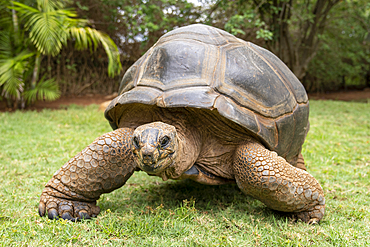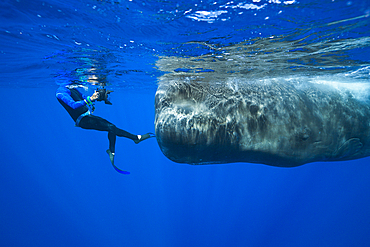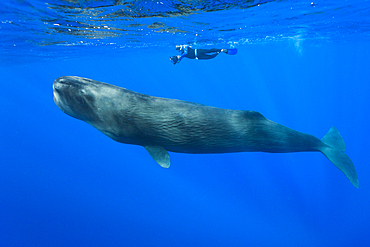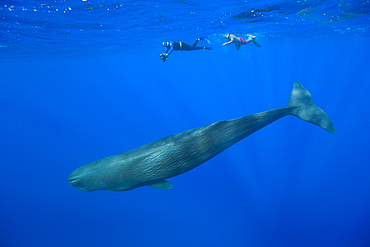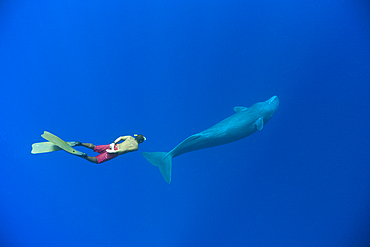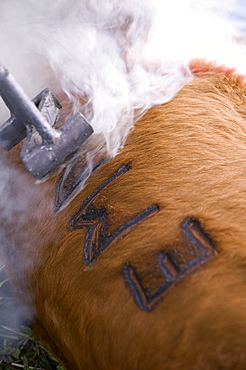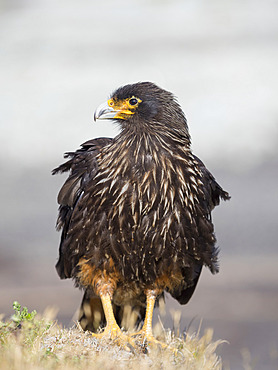Recent searches
Loading...
1116-52872 - Close-up of Nile crocodile head (Crocodylus niloticus) on riverbank in Chobe National Park, Botswana
1116-52871 - Close-up of Nile crocodile foot (Crocodylus niloticus) in sunshine in Chobe National Park, Botswana
1116-52865 - Aldabra giant tortoise (Aldabrachelys gigantea) crosses lawn near trees, Segera, Laikipia, Kenya
1116-52853 - Close-up of African bush elephant (Loxodonta africana) hind legs and tail, Segera, Laikipia, Kenya
1116-52837 - African bush elephant (Loxodonta africana) in the water washing and lifting river grass with its trunk and tusks in Chobe National Park, Chobe, North-West, Botswana
759-9881 - Skin diver strokes Sperm Whale, Physeter macrocephalus, Caribbean Sea, Dominica
759-9858 - Sperm Whale and Skin diver, Physeter macrocephalus, Caribbean Sea, Dominica
759-9855 - Sperm Whale and Skin diver, Physeter macrocephalus, Caribbean Sea, Dominica
759-9827 - Sperm Whale and Skin diver, Physeter macrocephalus, Caribbean Sea, Dominica
759-9826 - Sperm Whale and Skin diver, Physeter macrocephalus, Caribbean Sea, Dominica
759-9825 - Sperm Whale and Skin diver, Physeter macrocephalus, Caribbean Sea, Dominica
759-9822 - Sperm Whale and Skin diver, Physeter macrocephalus, Caribbean Sea, Dominica
759-9804 - Sperm Whale and Skin diver, Physeter macrocephalus, Caribbean Sea, Dominica
759-9778 - Sperm Whale and Skin diver, Physeter macrocephalus, Caribbean Sea, Dominica
759-9777 - Sperm Whale and Skin diver, Physeter macrocephalus, Caribbean Sea, Dominica
759-9776 - Sperm Whale and Skin diver, Physeter macrocephalus, Caribbean Sea, Dominica
759-9775 - Sperm Whale and Skin diver, Physeter macrocephalus, Caribbean Sea, Dominica
759-9774 - Sperm Whale and Skin diver, Physeter macrocephalus, Caribbean Sea, Dominica
759-9772 - Sperm Whale and Skin diver, Physeter macrocephalus, Caribbean Sea, Dominica
759-9771 - Sperm Whale and Skin diver, Physeter macrocephalus, Caribbean Sea, Dominica
759-9768 - Sperm Whale and Skin diver, Physeter macrocephalus, Caribbean Sea, Dominica
759-9763 - Sperm Whale and Skin diver, Physeter macrocephalus, Caribbean Sea, Dominica
759-9761 - Sperm Whale and Skin diver, Physeter macrocephalus, Caribbean Sea, Dominica
759-9760 - Sperm Whale and Skin diver, Physeter macrocephalus, Caribbean Sea, Dominica
759-9758 - Skin diver strokes Sperm Whale, Physeter macrocephalus, Caribbean Sea, Dominica
1184-8687 - Hedgehog skins, Traditional medicine market, Garoua, Northern Cameroon, Africa
1174-11483 - A close-up of a leopards paw, Panthera pardus.
1112-7569 - An adult border anole (Anolis limifrons) shedding its skin in a tree at Playa Blanca, Costa Rica, Central America
1112-7548 - An adult border anole (Anolis limifrons) shedding its skin in a tree at Playa Blanca, Costa Rica, Central America
1174-11441 - Front view of a chameleon walking, Chamaeleonidae, Londolozi Wildlife Reserve, Sabi Sands, South Africa
1174-11442 - A close up of a chameleon's eye, Chamaeleonidae, Londolozi Wildlife Reserve, Sabi Sands, South Africa
832-398439 - cute dog fence waiting be adopted. High resolution photo
832-398578 - Zebra black and white stripes pattern displays in a vertical texture, fur, and hair in a closeup image. The close-up is from the shoulder in B&W. Hwange National Park, Zimbabwe, Africa
1350-6678 - Strawberry Poison Frog (Dendrobates pumilio), adult, Bastimentos National Park, Bocas del Toro, Panama. The strawberry poison frog or strawberry poison-dart frog (Oophaga pumilio or Dendrobates pumilio) is a species of small amphibian poison dart frog found in Central America. It is common throughout its range, which extends from eastern central Nicaragua through Costa Rica and northwestern Panama. The species is often found in humid lowlands and premontane forest, but large populations are also found in disturbed areas such as plantations. The strawberry poison frog is perhaps most famous for its widespread variation in coloration, comprising approximately 15���30 color morphs, most of which are presumed to be true-breeding. O. pumilio, while not the most poisonous of the dendrobatids, is the most toxic member of its genus. The species is most diverse in Panama with varieties in vivid shades of all red, orange, blue, yellow or green, green and yellow, white with red, orange or black and spotted varieties. The most colorful mix is found in Isla Bastimentos Marine National Park though not all in one place. Colors vary by location. A beach on the north side of the island is named after the species. Two of Southern Explorations' Panama tours visit red frog habitat. Both the eight-day Panama Adventure trip and eleven-day Panama Highlights trip spend time in Isla Bastimentos Marine National Park and the former also goes to Red Frog Beach.
The red frog is not as poisonous as some of its cousins and is not a threat to humans. It subsists on a diet of ants that dine on poisonous plants, providing the red frog its protective skin toxin. Males attract females with a loud quick chirp. To hear the distinctive sound before you depart on your Panama tours, go to the University of Michigan Museum's biodiversity website (www.animaldiversity.ummz.umich.edu.) After birth, the tadpoles climb aboard the mother who deposits them in different protected areas where she retu
860-291274 - Red-billed Oxpeckers (Buphagus erythrorhynchus) is sitting on the giraffe's skin. Serengeti National Park. Kenya. Tanzania.
860-290911 - Adult, with typical yellow skin in face. Striated Caracara or Johnny Rook (Phalcoboenus australis), protected, endemic to the Falklands and highly intelligent bird of prey. South America, Falkland Islands, January
860-290609 - African bush elephant or African savanna elephant (Loxodonta africana). Mpumalanga. South Africa.
746-90821 - Adult, with typical yellow skin in face. Striated Caracara or Johnny Rook (Phalcoboenus australis), protected, endemic to the Falklands and highly intelligent bird of prey. South America, Falkland Islands, January
746-90819 - Adult, with typical yellow skin in face. Striated Caracara or Johnny Rook (Phalcoboenus australis), protected, endemic to the Falklands and highly intelligent bird of prey. South America, Falkland Islands, January
746-90818 - Juvenile with typical pale skin in face. Striated Caracara or Johnny Rook (Phalcoboenus australis), protected, endemic to the Falklands and highly intelligent bird of prey. South America, Falkland Islands, January
746-90820 - Adult, with typical yellow skin in face. Striated Caracara or Johnny Rook (Phalcoboenus australis), protected, endemic to the Falklands and highly intelligent bird of prey. South America, Falkland Islands, January
1350-5732 - Young boy in Gjohaven, an inuit settlement in the far north of Canada
1178-41026 - Legs of women with pink high heel on geometric pattern
1174-10735 - A male leopard, Panthera pardus, walks in dry short grass, looking over shoulder in sunlight, Londolozi Game Reserve, Sabi Sands, Greater Kruger National Park, South Africa
1174-10748 - A wild dog pup, Lycaon pictus, lies on the ground, head up, direct gaze, Londolozi Game Reserve, Sabi Sands, Greater Kruger National Park, South Africa
1174-10751 - A wild dog, Lycaon pictus, stands in fallen leaves, direct gaze, back lit, Londolozi Game Reserve, Sabi Sands, Greater Kruger National Park, South Africa
1174-10729 - A leopard's feet, Panthera pardus, standing on a tree branch, Londolozi Wildlife Reserve, Sabi Sands, South Africa
1174-10747 - Two wild dog pups, Lycaon pictus, stand together, looking out of frame, Londolozi Game Reserve, Sabi Sands, Greater Kruger National Park, South Africa
1174-10749 - A pack of wild dog, Lycaon pictus, lie outside their den in a termite mound and under a big tree, Londolozi Game Reserve, Sabi Sands, Greater Kruger National Park, South Africa
1174-10805 - A leopard, Panthera pardus, lies on a dead tree branch, looking out of frame, Londolozi Wildlife Reserve, Sabi Sands, Greater Kruger National Park, South Africa
1174-10807 - A leopard, Panthera pardus, balances along a log at sunset, Londolozi Wildlife Reserve, Sabi Sands, Greater Kruger National Park, South Africa
1174-10746 - Wild dog pups, Lycaon pictus, wait at their den site at sunset, Londolozi Game Reserve, Sabi Sands, Greater Kruger National Park, South Africa
1174-10819 - A leopard, Panthera pardus, stands over kill in a tree, direct gaze, Londolozi Wildlife Reserve, Sabi Sands, Greater Kruger National Park, South Africa
1174-10806 - A leopard, Panthera pardus, balances along a log at sunset, Londolozi Wildlife Reserve, Sabi Sands, Greater Kruger National Park, South Africa
1174-10818 - A leopard, Panthera pardus, lies in a tree, forest in the foreground, Londolozi Wildlife Reserve, Sabi Sands, Greater Kruger National Park, South Africa
1174-10817 - A leopard, Panthera pardus, lies on a tree branch, looking out of frame, Londolozi Wildlife Reserve, Sabi Sands, Greater Kruger National Park, South Africa
1174-10742 - Wild dog pups, Lycaon pictus, wait at their den site at sunset, Londolozi Game Reserve, Sabi Sands, Greater Kruger National Park, South Africa
1174-10736 - A male leopard, Panthera pardus, lies on a termite mound at sunset, back lit, looking out of frame, Londolozi Game Reserve, Sabi Sands, Greater Kruger National Park, South Africa
1174-10745 - A female leopard, Panthera pardus, lies on a boulder in sunlight, ears back, Londolozi Game Reserve, Sabi Sands, Greater Kruger National Park, South Africa
1174-10750 - A pack of wild dog, Lycaon pictus, lie outside their den in a termite mound and under a big tree, Londolozi Game Reserve, Sabi Sands, Greater Kruger National Park, South Africa
1174-10793 - A leopard, Panthera pardus, walks along a dirt track, ears back, dry brown grass background, Londolozi Wildlife Reserve, Sabi Sands, Greater Kruger National Park, South Africa
1350-4377 - Traditional furry S?mi handmade shoes. Inside the home of Tuula Airamo, a S?mi descendant, and Reindeer farmer, by Muttus Lake. Inari, Lapland, Finland
1350-4375 - Traditional furry S?mi handmade shoes. Inside the home of Tuula Airamo, a S?mi descendant, and Reindeer farmer, by Muttus Lake. Inari, Lapland, Finland
1350-4378 - Traditional furry S?mi handmade shoes. Inside the home of Tuula Airamo, a S?mi descendant, and Reindeer farmer, by Muttus Lake. Inari, Lapland, Finland
1116-52169 - Men hunting from the Blue Duck Lodge, a working cattle farm with a focus on conservation, located in the Whanganui National Park. One man carrying goat kill on his back, (goats are a danger to the native wildlife and hunting is encouraged and educated here); Retaruke, Manawatu-Wanganui, New Zealand
1116-51263 - An African bush elephant (Loxodonta africana) in the savannah walks through long, golden grass that contrasts with the dark blue storm clouds behind. It has grey, wrinkled skin and is feeding itself with its trunk. Shot with a Nikon D810 at Klein's Camp, Serengeti National Park; Tanzania
1116-51956 - Close-up of an African bush elephant (Loxodonta africana) drinking from grassy waterhole with its trunk curled into its mouth on the savanna in Etosha National Park; Otavi, Oshikoto, Namibia
1116-51955 - Close-up of an African bush elephant (Loxodonta africana) drinking from grassy waterhole with its trunk curled into its mouth on the savanna in Etosha National Park; Otavi, Oshikoto, Namibia
1116-51278 - An African bush elephant (Loxodonta africana) is throwing dust over itself with its trunk on a bare earth slope with trees in the background under a clear sky. It has mud stains on its trunk, and the dust is exploding in a cloud against its wrinkled grey skin. Shot with a Nikon D810 in Chobe National Park; Botswana
1174-10708 - A male and female lion, Panthera leo, fight
1174-10704 - A leopard, Panthera pardus, holds a dead spurfowl in its mouth, Pternistis natalensis
1174-10715 - The head of a leopard, Panthera pardus, black background
1174-10633 - A group of wild dog puppies, Lycaon pictus, licking each other.
1174-10702 - The side profile of a male lion, Panthera leo, in the dark
1174-10634 - A female leopard, Panthera pardus, lies on a broken tree branch.
1174-10639 - The trunk of an elephant, Loxodonta africana, in black and white
1174-10709 - A mother leopard and cub, Panthera pardus, play together by jumping into the air
1174-10706 - A leopard, Panthera pardus, chases an impala, Aepyceros melampus
1174-10642 - A male leopard, Panthera pardus, walks towards the camera, direct gaze, snarling
1174-10712 - The eye of a leopard, Panthera pardus, looking through greenery, natural frame
1174-10711 - The end of an elephant's trunk, Loxodonta africana, resting on the floor
1113-106148 - Carnival parade of the Tschäggättä in Wiler, Lötschental, Valais, Switzerland.
1113-106160 - Tschäggättä mask, carnival custom in Lötschental, Valais, Switzerland.
1113-106152 - Carnival parade of the Tschäggättä in Wiler, Lötschental, Valais, Switzerland.
1113-106150 - Carnival parade of the Tschäggättä in Wiler, Lötschental, Valais, Switzerland.
1113-106157 - Carnival parade of the Tschäggättä in Wiler, Lötschental, Valais, Switzerland.


